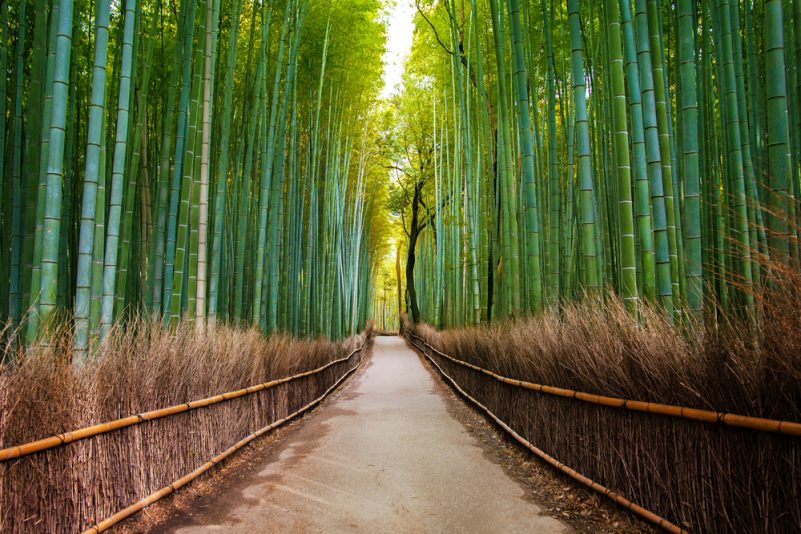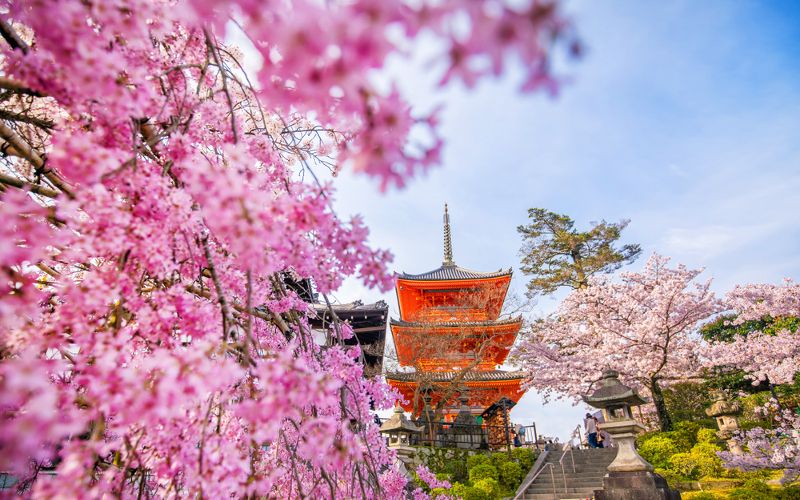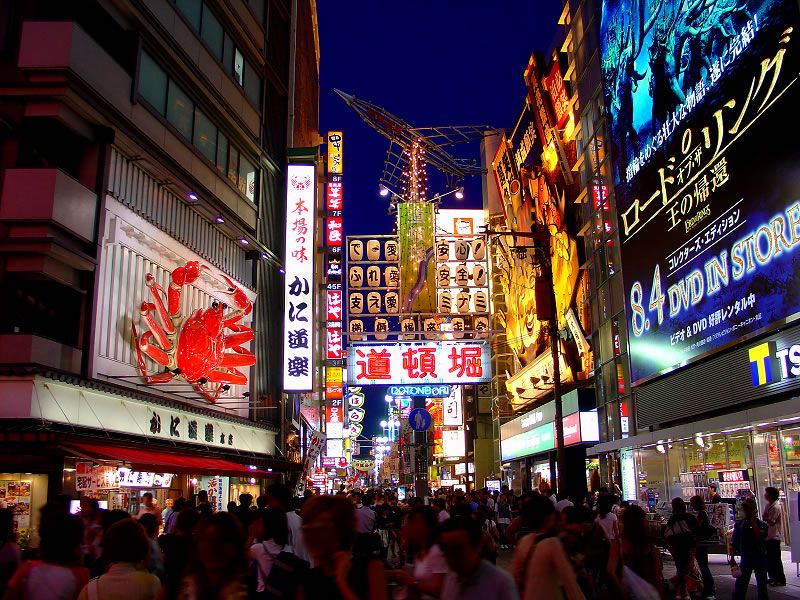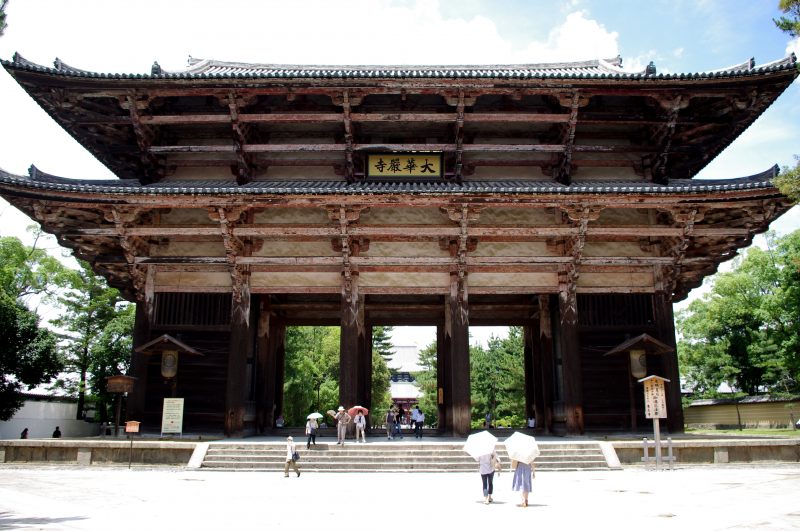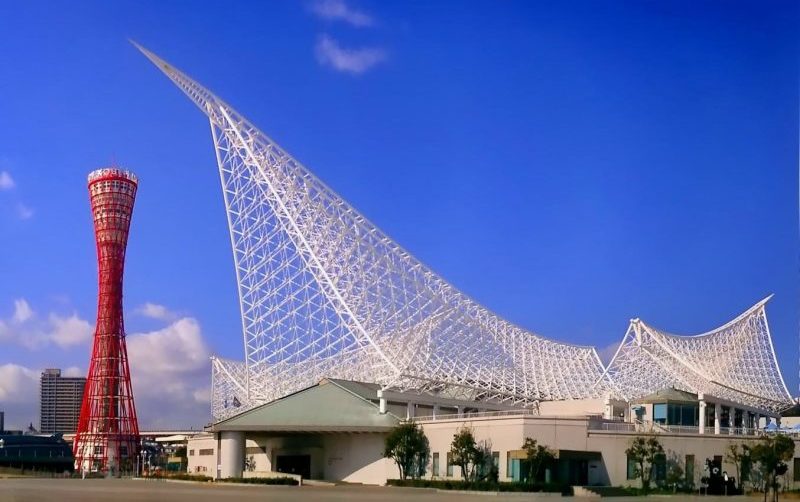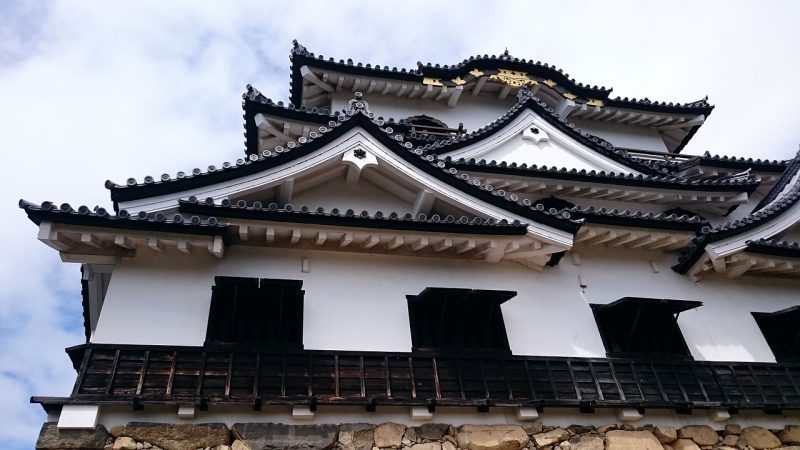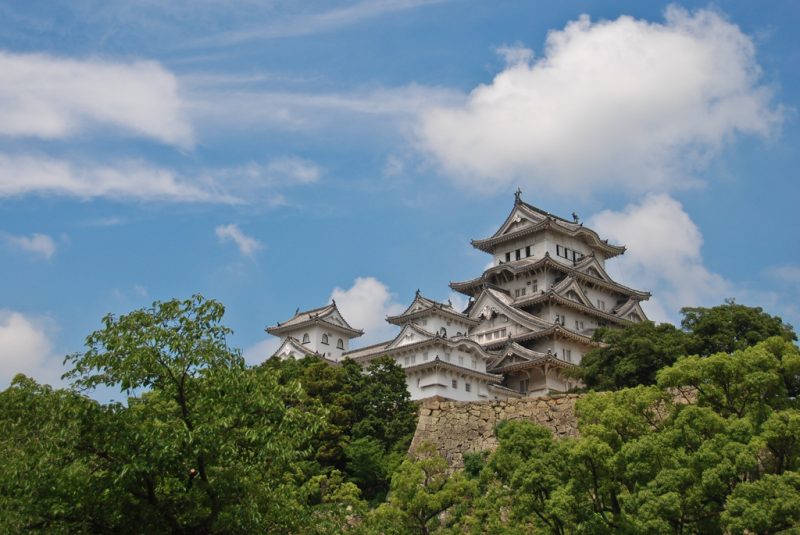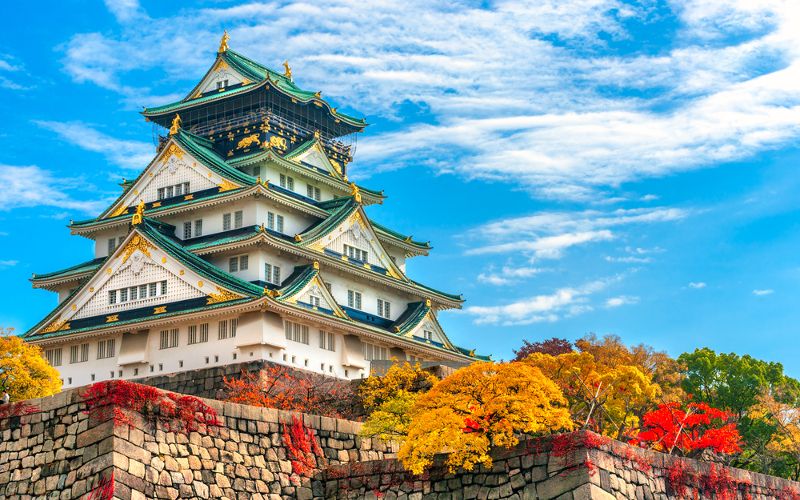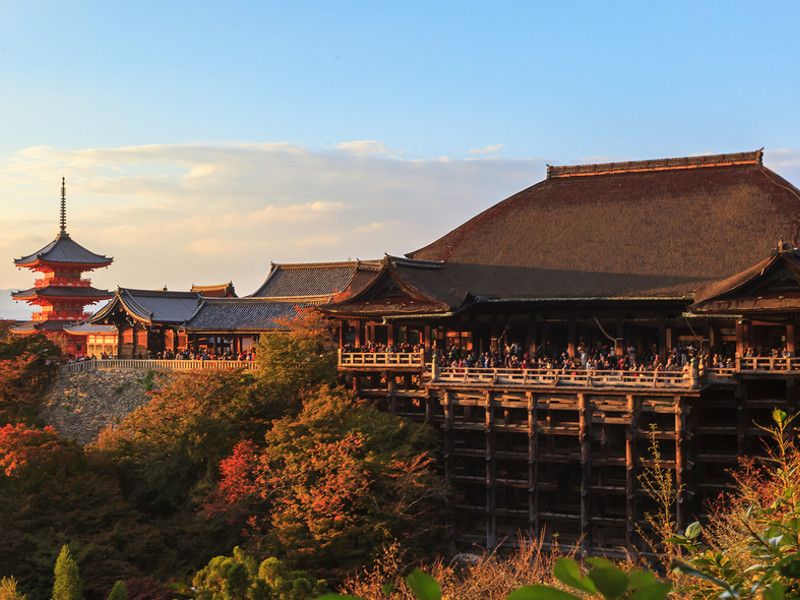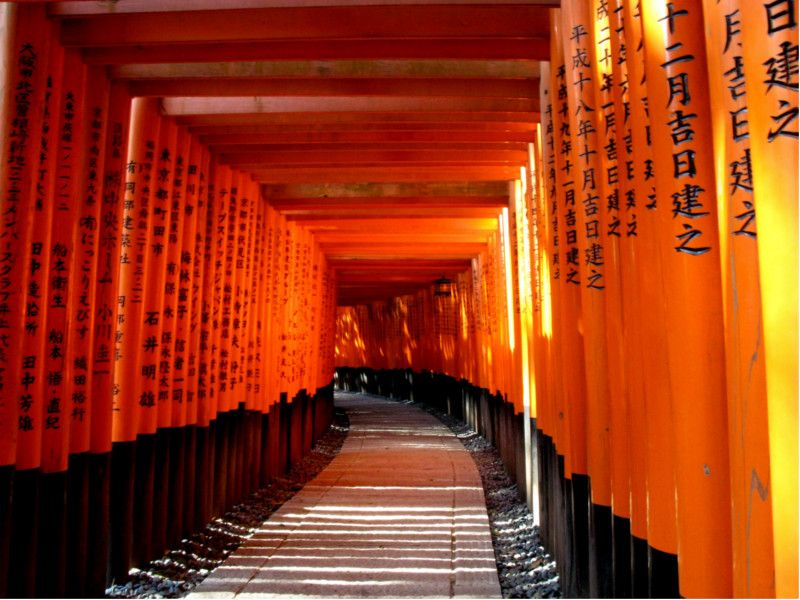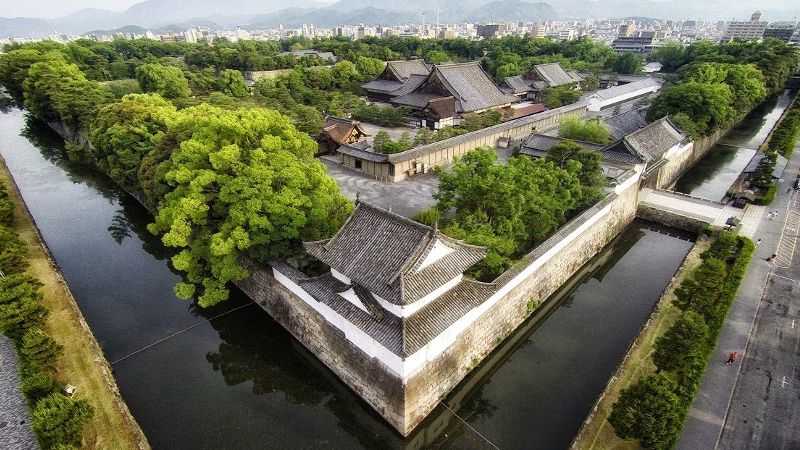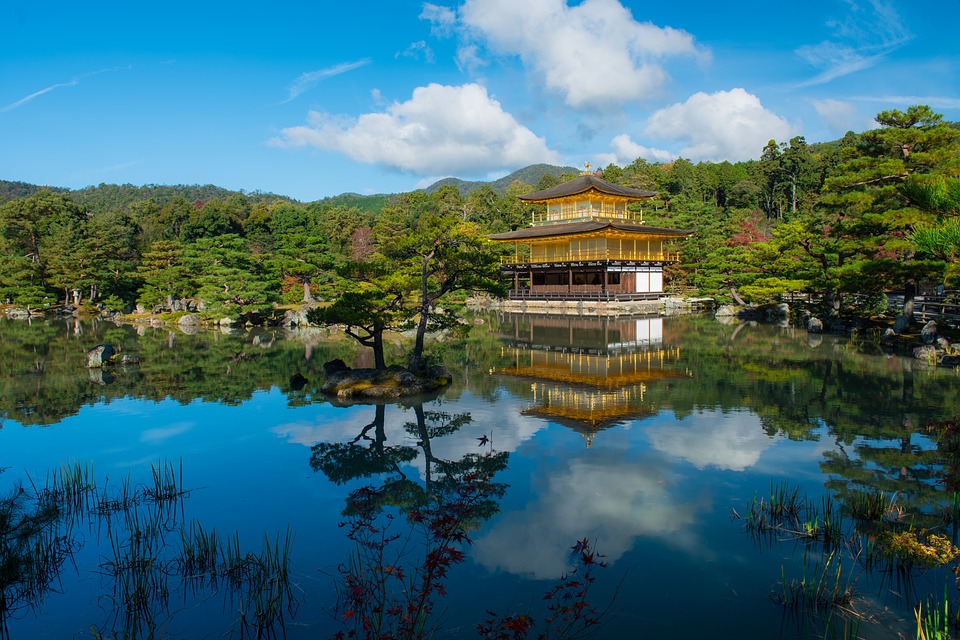The Kansai region, also known as the Kinki region, covers a vast area of central Honshu, the largest island of Japan, and includes the major cities of Kyoto, Osaka, and Nara.
The area, which stretches from Lake Biwa across the Osaka plain and along the Seto Inland Sea to Kobe and Himeji, is well-known for its large range of historic castles, ancient shrines, stunning natural landscapes and modern city nightlife.
Below you can find a complete guide to the major destinations and attractions in the area, and how to get around with the JR Pass or a Kansai regional pass.
Table of Contents
Kansai prefectures
Although the prefectures of Fukui, Tokushima, and Tottori are sometimes included in the area, the Kansai region officially consists of 7 prefectures:
- Hyogo – A mountainous prefecture which continous some of Kanai’s best hot spring resorts and historic attractions such as Himeji castle.
- Kyoto – Home to the cities of Kyoto and Uji, as wella s the scenic Amanohashidate Sandbar and the historic town of Miyama.
- Shiga – This prefecture contains a range of charming historic towns such as Hikone, Koka, and Omi Hachiman.
- Osaka – Home to the city of the same name and its historic castle, as well as an exciting nightlife and entertainment scene.
- Nara – A prefecture that is home to Japan’s first permanent capital city, as well as one of the best cherry blossom viewing areas, Yoshino.
- Wakayama – Offers some of Kansai’s finest natural landscapes, including Mount Koma and the Kumano pilgrimage route.
- Mie – Contains the coastal town of Ise Shima, site of Japan’s most sacred Shinto shrines, as well as the castle town of Iga Ueno.
Top destinations in Kansai
Kansai covers a total area of 33 square kilometers and includes the second-most populated metropolitan area in Japan after the Greater Tokyo Area, the Keihanshin region (made up of Osaka, Kobe and Kyoto).
Some of the most popular cities in Kansai, many of which were former capitals of Japan, include:
Kyoto
Kyoto, located in the central part of the island of Honshu, is considered by many as Japan’s most beautiful city. Kyoto was the Japanese capital until the government was moved to Tokyo in 1868.
However, Kyoto is still Japan’s religious center with over 1000 Buddhist temples. Kyoto is home to some of Japan’s most iconic landmarks, with some of the most exquisite gardens, temples, and masterpieces you will ever see.
Osaka
Osaka is located on the main island of Honshu, roughly in the center of Japan. With a population of over 2.5 million people, it is Japan’s third-largest city.
Osaka was the country’s first capital, and to this day it is considered a vital economic center in Japan. It is home to the largest seaport in Japan and many leading Japanese manufacturers.
Nara
Nara is an ancient city located in the Kansai region of Japan’s main island of Honshu. It was the first “real” capital of Japan, remaining such for less than a century. This historic location is home to a nearly unmatched eight UNESCO World Heritage Sites, including numerous Buddhist temples. The city was founded in the year 710 C.E. and originally known as Heijo.
Among its attractions are the oldest and largest wooden buildings in the world, the Nara Deer Park whose tame deer delight in entertaining visitors, fantastic cherry blossom viewing spots, and ninjas.
Kobe
Kobe is a coastal city of the Kansai region of western Japan, located on the main island of Honshu bordering Osaka Bay. It is one of Japan’s ten largest cities. Enclosed by the sea on one side and a majestic mountain range on the other, it is also considered one of Japan’s most beautiful big cities.
Kobe is rich in history as the first port in Japan to open to foreign trade. This is evident in the western style architecture of some neighborhoods. Recent history is displayed at the Kobe City Museum and the Earthquake Museum.
Uji
Situated between Kyoto and Nara, Uji is famous for being the home of a Japanese staple, green tea, which was first cultivated in the region in the 12th Century.
The town also offers a range of historic architecture to explore, including a number of rustic temples and the oldest Japanese shrine still in existence.
Hikone
Scenic lakes and historic castles – that is the setting of the small Japanese town of Hikone. Situated on the shores of the nation’s largest lake, Lake Biwa, in the Shiga Prefecture, Hikone is steeped in natural beauty as well as historical relevance.
Hikone is famous for its remarkably well-preserved castle, which goes by the same name as its host city. Hikone Castle is, in fact, one of the five Japanese castles designated as national treasures. This honor – “the highest designation for cultural properties in Japan” - is due to its unique combination of architectural styles.
Best things to do in Kansai
Kansai is home to a wide range of both historic and modern points of interest, scattered across both its major cities and more rural areas.
From temples and shrines to castles and theme parks, some of the best attractions in the region include:
Himeji Castle
Built in 1609, Himeji castle is one of the most highly regarded castles in Japan. This is because of its immense size and the fact it is very well-preserved, having survived centuries of natural disasters and wars.
Construction began on the castle grounds during the 1400s, and the 80 structures grew in size as the centuries passed. The primary castle structure was built in 1609.
Also known as ‘White Heron Castle’ because of its distinctive pale facade, this UNESCO World Heritage Site is located close to the city of the same name.
Nara Park
The location of many of the most appealing attractions in Nara, including the National Museum, Kofukuji Temple, Kasuga Taisha Shrine, and Todaiji Temple, the city’s deer park was founded in 1880 and is one of the oldest in Japan.
Visitors to the park can also buy special crackers on-site to feed some of the hundreds of tame animals that roam the grounds, and enjoy the spectacular cherry blossom in the spring. Nara can be easily reached by train from either Osaka or Kyoto.
Ise Shrine
Japan is well known for its rich culture and preservation of history. Shrines and temples are located all over Japan’s islands, large and small. The most sacred shrines of the Shinto religion are located on the Shima Peninsula. These shrines, the Ise Shrines, are nestled in the heart of a popular leisure and resort destination.
Its area holds something for every traveler, from religious pilgrimages to exciting theme parks. In fact, the entire peninsula is regarded as a national park, with stunning vistas and peaceful forests.
Mount Koya
Located in the heavily forested Wakayama mountains, Mount Koyasan is an important religious destination in Kansai, as well as a popular tourist attraction.
The cradle of Shingon Buddhism, it offers over 100 temples and pagodas to explore, as well as the mysterious Okunoin cemetery, where spirits are said to roam. Perfect for a day trip, visitors also have the option to stay overnight in a temple lodging.
Osaka Castle
One of the most famous historical sites in all of Japan, Osaka castle is situated right in the heart of the city of the same name and distinctive for its unique roof shape and stately white walls with gold leaf accents.
Surrounded by thick rock walls, moats and the stunning Nishinomaru Garden, the castle is particularly popular among tourists during the Sakura cherry blossom in the spring.
Kiyomizu-dera
Kyoto’s Kyomizu-dera Temple is one of the most celebrated of Japan’s numerous temples and shrines. The meaning of its name is literally translated “Pure Water Temple”. This name is derived from the pristine waters of the Otowa Waterfall, on which site the temple was built. It is also famous for its large wooden terrace.
The Kyomizu-dera was founded in 780. Its present structures were erected in 1633. It was originally associated with one of the oldest schools of Japanese Buddhism, the Hosso sect. Since 1965, it has hosted its own Kita Hosso sect.
Fushimi Inari
To your left and to your right are massive red beams with blackened footings. Above you, too, are red beams with sparklings of sunlight filtering through in between. The color, called shuiro in Japanese, is said to represent the sun. The torii gates tower above you, but lessen in number as you ascend the mountain.
When you reach the Yotsutsuji intersection, halfway up the mountain, all of Kyoto sprawls before you in a breathtaking panorama. This is what a trek on the hiking trails of Kyoto’s Fushimi Inari shrine is like.
Nijo Castle
Another fantastic location at which to view the sakura blossom, this elegant wooden castle is one of the best-preserved from Japan’s Edo Period.
Surrounded by stone fortifications and moats, the central structure, Ninomaru Palace, was also historically well-protected from intruders by secret features such as booby-trapped floors. Can be reached in under 20 minutes from central Kyoto.
The Golden Pavillion
Situated in northwestern Kyoto, this UNESCO Heritage Site has a long and turbulent history dating back to 1397 and has been rebuilt numerous times, most recently in 1955.
Widely considered the most famous temple in Japan and visited by a large number of both Japanese and international tourists year-round, it is easy to access and just a 40-minute bus ride from Kyoto station.
Byodoin Temple
Byodoin is a stunning Buddhist temple located in the small city of Uji. There is an incredible amount to see at the UNESCO World Heritage site which has drawn visitors for over 1000 years.
It’s such an iconic landmark in Japan that it appears on the 10 yen coin.
Along with its garden, the temple represents the “Pure Land Paradise” and its design was highly influential on subsequent temple construction.
Main train lines and transportation
A number of train and Shinkansen lines operate within the Kansai region. Some of the lines you can expect to use when visiting attractions in the area include:
-
- Tokaido Shinkansen
- Sanyo Shinkansen
- Kansai Main line
- Sagano line
- Kobe line
- Kyoto line
- Hanwa line
- Yamatoji line
- Osaka Loop line
- Haruka Express
- Kansai airport line
- Osaka International Airport (ITM)
- Kansai International Airport (KIX)
Other regions of Japan
Japan is traditionally divided into 8 regions, most of which contain several of the country’s 47 prefectures. However, the northern island prefecture of Hokkaido forms its own region, and the Okinawa Prefecture is sometimes regarded as a 9th prefecture, although it is often included within Kyushu.
Other than Kansai, the regions in Japan are as follows:
